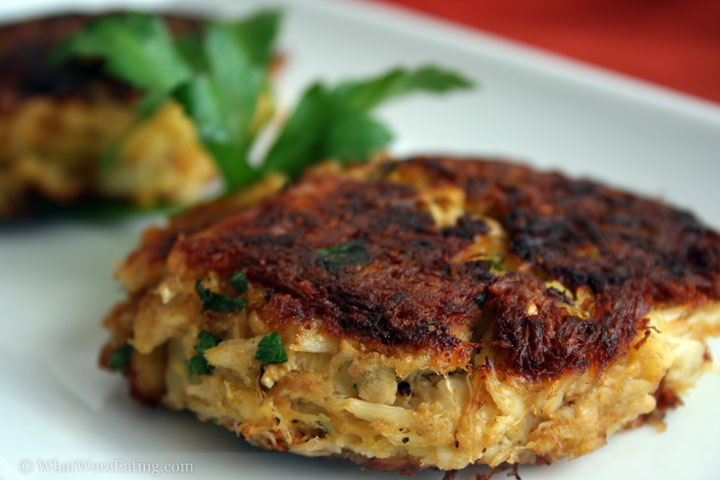I apologize for not keeping my promise of posting recipes every Monday and Wednesday, especially because a lot of you have told me that you not only enjoyed the goat curry recipe, but some of you actually tried it--kudos! In addition to my apologies, I offer you not one, but three recipes that you might want to try out tomorrow night in honor of the VP debate.
I can't think of many things Alaska and Delaware have in common besides crabs and lighthouses.
Cocktail: The LighthouseThe Lighthouse is a drink that reminds me of a rowdy, very political friend of mine in college who lit his face on fire with his first flaming shot. He was fine and we laughed about it afterwards, but then we lost him in Iraq and I'm really sorry he won't be able to enjoy Obama and Biden kick ass in this election. So this recipe's for him--R.I.P., K.
- 1/3 oz. Kahlua
- 1/3 oz. Baileys
- 1/3 oz. 151 proof rum
Pour kahlua into a shot glass. With a spoon, slowly pour irish cream into the shot glass on top of the kahlua. Pour the 151 rum, again with the spoon, slowly on top of the irish cream and light on fire. Blow flame out before drinking. (seriously, don't forget!)
Starter: Masala Crab CakesCrab cakes are a classic, but I always think they can use a little spice (read a metaphor into this if you will). This is a slightly modified version of
Anjum Anand's recipe and the closest I could find to what our wedding caterers must use in their restaurant--and, sweet jesus, they're tasty.
- 4 tbsp vegetable oil
- 1 small onion, finely chopped
- 3 scallions, chopped
- thumb-sized piece fresh ginger, peeled and finely chopped
- 4 garlic cloves, crushed
- 2 tsp ground coriander
- ¼-½ tsp red chilli powder

- salt, to taste
- 1 tsp fresh ground peppercorns
- 1 tsp garam masala
- 2 tbsp lemon juice
- a few fresh coriander leaves and stalks, chopped
- 14oz prepared crab meat
- 1 large egg
- 2½ tbsp mayonnaise
- 2 cups breadcrumbs
- 6 thai green chilies, chopped
For the tamarind mayonnaise- 80g/3oz mayonnaise
- 50ml/2fl oz milk
- salt, to taste
- ¼ tsp freshly ground black pepper
- 1 tbsp tamarind paste, or to taste
- handful fresh coriander leaves and stalks, chopped
- lightly dressed salad leaves, to serve
1. Preheat the oven to 170C/325F/Gas 3.
2. Heat half the oil in a non-stick pan and fry the onion for about four minutes, or until soft. Add the ginger and garlic and cook for another 40 seconds. Stir in the coriander, red chilli powder, salt and garam masala and cook for another 20 seconds then take off the heat. Place into a large bowl.
3. Add the lemon juice, fresh coriander, crab, egg and mayonnaise to the onion mixture in the bowl. Stir well and add the breadcrumbs. Divide into eight equal portions and form each into a circular shape.
4. Heat one tbsp of oil in a non-stick pan and cook the crab cakes in batches over a low moderate heat for about two minutes on each side, or until golden brown adding more oil as needed.
5. Place the cooked crab cakes on a baking tray and place them into the oven to stay warm while you cook the others.
6. For the tamarind mayonnaise, place all the tamarind mayonnaise ingredients into a bowl and whisk together. Season to taste.
7. To serve, take the warm crab cakes out of the oven, put them on a plate and serve with a spoonful of the tamarind mayonnaise.
Entree: Amtrak New York Strip Steak Did you know that Biden takes the Amtrak home to Delaware every night after session ends in D.C.? If you've missed that, you must have been out cold since he was picked as veep--and, even then, I feel like they're whispering it in coma-patients' ears or something. I thought we'd serve up an entree he must miss now that he's on the campaign trail and flying/busing everywhere. I refuse, however, to offer the recipe for either of the sauces they offer with the steak. Seriously: "please select either a green peppercorn sauce or crushed plum tomato sauce to
enhance your entree" [emphasis added, but are they freakin' serious??] No way, no how.
- Steak
- Salt
- Pepper
- Olive Oil
Pat the steak dry. Season with salt and pepper, to taste, on both sides. Place on well-oiled hot grill and cook for 4 minutes on each side for medium rare. Adjust cooking times to your liking.
Dessert: Beehive CakeAnd, finally, something sweet and light (hearted, at least) to help us stomach the nonsense we're going to hear. Remember when there were conspiracy theories flying around about Bush wearing an ear-piece, aiding and abetting his performance during his debates against Kerry? I'm thinking Palin's beehive could hide some stuff. Just sayin'...
Here's a fun recipe, courtesy of Williams-Sonoma:

- 2 3/4 cups all-purpose flour
- 1 1/2 tsp. baking powder
- 1/2 tsp. salt
- 16 Tbs. (2 sticks) unsalted butter
- 1 2/3 cups granulated sugar
- 3 tsp. lemon zest
- 4 eggs, lightly beaten
- 1 tsp. vanilla extract
- 2/3 cup milk
- 1/4 cup fresh lemon juice
For the glaze:
- 1/2 cup honey
- 1 1/2 Tbs. fresh lemon juice
- 1/4 tsp. salt
For the quick buttercream:
- 4 Tbs. (1/2 stick) unsalted butter
- 1 1/2 cups confectioners' sugar, sifted
- 1 Tbs. milk
- 1/2 tsp. vanilla extract
- Pinch of salt
For the royal icing:
- 1 cup confectioners' sugar, sifted
- 2 to 3 tsp. milk
Sugar honeybees for decorating (optional)
PREPARATION
Have all the ingredients at room temperature. Position a rack in the lower third of an oven and preheat to 325°F. Grease and flour a beehive cake pan; tap out excess flour.
To make the cake, over a sheet of waxed paper, sift together the flour, baking powder and salt; set aside.
In the bowl of an electric mixer fitted with the flat beater, beat the butter on medium speed until creamy and smooth, about 1 minute. Add the granulated sugar and lemon zest and continue beating until light and fluffy, about 5 minutes, stopping the mixer occasionally to scrape down the sides of the bowl. Add the eggs a little at a time, beating well after each addition. Beat in the vanilla just until incorporated, about 30 seconds.
Reduce the speed to low and add the flour mixture in three additions, alternating with the milk and beginning and ending with the flour. Beat each addition just until incorporated, stopping the mixer occasionally to scrape down the sides of the bowl. Add the lemon juice and beat for 30 seconds.
Spoon the batter into the prepared pan, spreading the batter so the sides are higher than the center. Bake until the cake begins to pull away from the sides of the pan and a toothpick inserted into the center comes out clean, 55 to 60 minutes. Transfer the pan to a wire rack and let the cake cool in the pan for 10 minutes.
Meanwhile, make the glaze: In a small saucepan over medium heat, stir together the honey, lemon juice and salt and bring just to a simmer, about 2 minutes. Remove from the heat.
Tap the cake pan gently on a work surface to loosen the cake. Set the rack over a sheet of waxed paper, invert the pan onto the rack and lift off the pan. Using a pastry brush, brush the warm cake with the glaze. Let the cake cool completely, at least 2 hours, before assembling and decorating.
To make the buttercream, in a small bowl, using a handheld mixer, beat the butter on medium speed until smooth and creamy, about 1 minute. Add the confectioners' sugar, milk, vanilla and salt and continue beating until light and fluffy, 2 to 3 minutes more.
To make the royal icing, in a small bowl, stir together the confectioners' sugar and the 2 tsp. milk until smooth. If necessary, add more milk 1/2 tsp. at a time until the icing is thick but still pourable.
Stand one half of the cooled cake vertically on its base. Using a serrated knife, level the flat side of the cake by trimming off 1/8 to 1/4 inch from the edge. Repeat with the other cake half.
Using an offset spatula, spread a thin layer of buttercream, about 1/2 cup, on the cut side of one of the cake halves. Place the cut side of the other cake half against the frosted side and gently press to secure the two halves; using the spatula, smooth the buttercream at the seam.
Using a large spatula, carefully transfer the cake to a serving platter. Drizzle with the royal icing, making sure to cover the frosted seams of the beehive. Decorate with sugar honeybees.
Phew! Enjoy.























